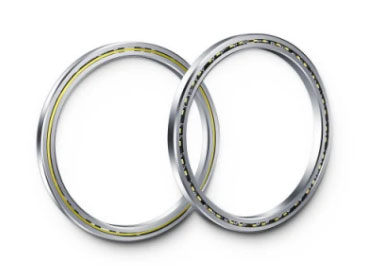Thrust Roller Bearings
Thrust Roller Bearings: The Key to Efficient Load Distribution in High-Performance Applications
Thrust roller bearings are a type of rolling element bearing designed to handle axial loads, also known as thrust loads. They are commonly used in applications where high loads are present, such as heavy machinery, marine propulsion systems, and wind turbines.
The design of thrust roller bearings allows them to handle significant axial loads without compromising their ability to handle radial loads. They consist of a set of cylindrical or tapered rollers arranged in a cage, which allows them to distribute load evenly across the roller set.

One significant advantage of thrust roller bearings is their ability to handle both thrust and radial loads, making them highly versatile. They are typically used in applications where the load direction changes frequently, such as in machine tools, which require precise positioning and alignment of the spindle.
Thrust roller bearings come in various designs, including spherical roller thrust bearings, cylindrical roller thrust bearings, and tapered roller thrust bearings. The design chosen depends on the specific application's load and speed requirements, as well as the space available for the bearing.
Spherical roller thrust bearings have a spherical raceway in the housing and the washer, allowing them to compensate for misalignment and shaft deflection. They are commonly used in applications where misalignment is expected, such as in paper mills and rolling mills.
Cylindrical roller thrust bearings have a cylindrical raceway and can handle high axial loads at high speeds. They are typically used in applications such as gearboxes and oilfield drilling equipment.
Tapered roller thrust bearings are designed to handle both radial and thrust loads and are commonly used in automotive and truck transmissions and construction equipment.
One significant challenge when using thrust roller bearings is ensuring proper lubrication. The right lubricant can significantly extend the bearing's life, reduce friction, and prevent overheating. The lubrication type and quantity depend on the bearing design, operating conditions, and the load applied.
In conclusion, thrust roller bearings are essential components of high-performance machinery, allowing for efficient load distribution and handling of axial and radial loads. Their versatility makes them suitable for use in various applications, such as heavy machinery, marine propulsion systems, and wind turbines. Choosing the right thrust roller bearing for an application is crucial to achieving optimal performance, reducing maintenance costs, and ensuring long-term reliability. Proper lubrication is also crucial for maximizing the bearing's lifespan and preventing premature failure.
- Previous: Spindle Bearings
- Next: Thrust Ball Bearings













